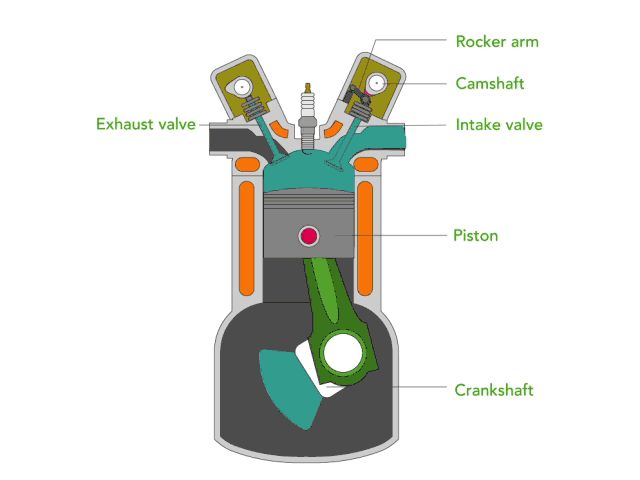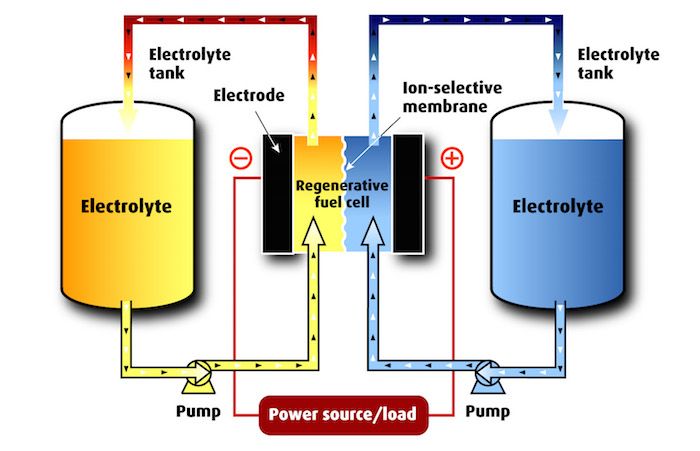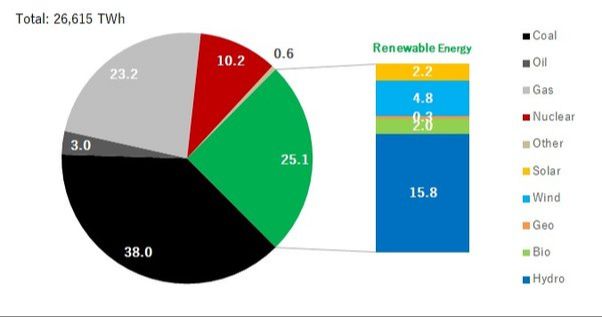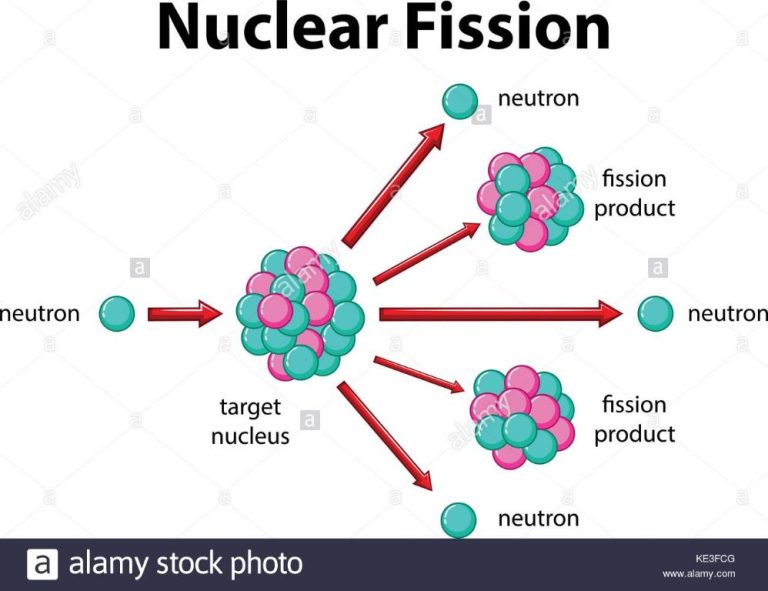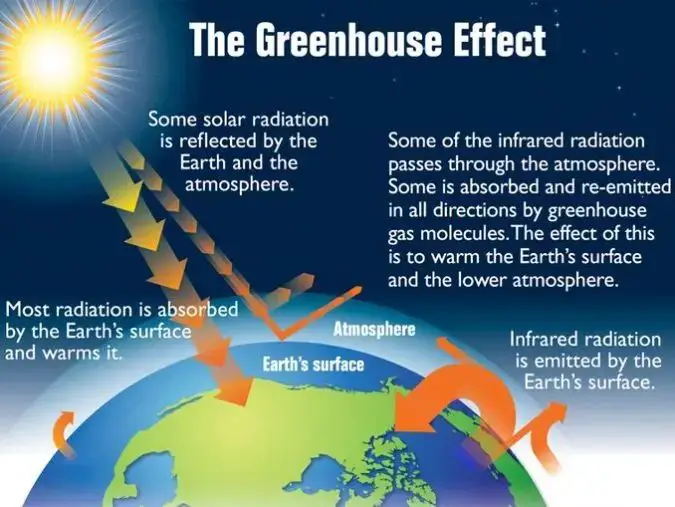Are Renewables Taking Over?
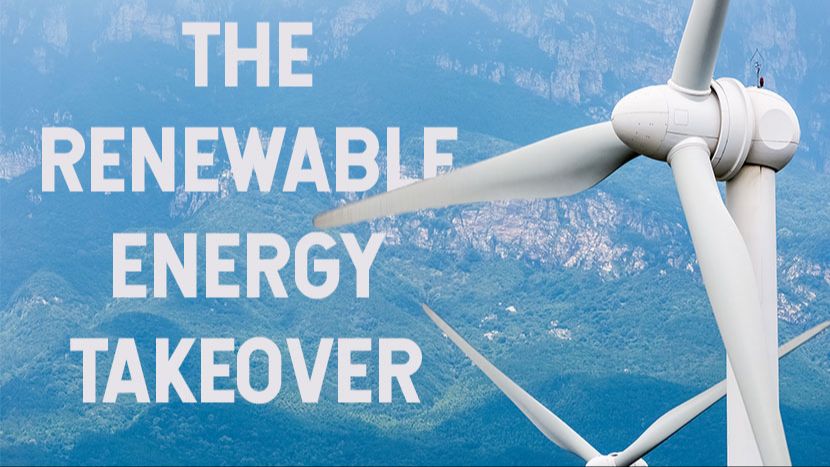
Renewable energy comes from natural sources that are constantly replenished, such as sunlight, wind, water, plants, and geothermal heat. The most common renewable energy technologies used today are solar, wind, hydropower, and biomass. There has been growing interest in renewable energy taking over from fossil fuels as the main source of energy globally. This is driven by concerns about climate change, energy security, and sustainability. Renewables are seen as a clean and sustainable alternative to fossil fuels. This article will examine the growth of renewables, what’s driving adoption, challenges renewables face, whether fossil fuels still dominate, the potential for electrification, developments in the developing world, advanced renewable technologies, and the role of policy.
Growth of Renewables
The share of renewables in global electricity production has grown significantly over the past decade. According to Enerdata, the share of renewables rose from 21% in 2010 to 29% in 2020.
Some countries have seen dramatic growth in renewable electricity production. For example, according to Enerdata, between 2010 and 2020 the share of renewables increased by 22 percentage points to 31% in Australia, by 14 points to 55% in Chile, and by 12 points each in the US (to 22%) and China (to 31%).
According to Wikipedia, renewables accounted for 28% of global electric generation in 2021. This consisted of hydropower (55%), wind (23%), biomass (13%), solar (7%) and geothermal (1%). China was the top producer of renewable electricity, followed by the United States, Brazil, and Canada.
Factors Driving Adoption
Several key factors are propelling the growth and adoption of renewable energy sources globally. Chief among them is climate change. The burning of fossil fuels like coal, oil, and natural gas is the primary driver of rising global temperatures. Renewables produce little to no greenhouse gas emissions, which makes them critical to mitigating climate change according to the United Nations.
Renewables also enhance energy security by relying on abundant domestic resources rather than imported fossil fuels. This reduces a nation’s vulnerability to fuel shortages and price shocks. The US EPA notes renewable energy generation creates energy independence and insulation from global energy market volatility.
Additionally, the costs of renewables like solar and wind have declined dramatically in recent years, making them cost competitive with fossil fuels in many markets. Supportive government policies, such as tax incentives, renewable portfolio standards, and carbon pricing have further accelerated cost declines and adoption.
Challenges Facing Renewables
While renewable energy sources like solar and wind are rapidly expanding, they still face challenges to further adoption. One such challenge is intermittency, as solar and wind generation fluctuates based on weather and time of day, requiring backup power or storage solutions (IEA). Developing affordable and large-scale energy storage is still an area of ongoing research.
Transmission infrastructure also poses a hurdle, as renewable sources are often located far from population centers that require electricity. Massive investments are needed in transmission lines to connect sources of renewables to grids (Sustainable Review).
Additionally, fossil fuels still dominate energy generation and their associated industries wield enormous economic and political influence. Renewables have to compete against subsidized fossil fuels and overcome policy barriers that favor conventional sources (Regen Power).
Fossil Fuels Still Dominate
Despite the growth of renewable energy sources, fossil fuels continue to account for a majority of global energy production and consumption. According to the U.S. Energy Information Administration, fossil fuels accounted for about 81% of total U.S. primary energy production in 2022 (U.S. energy facts explained). Globally, the percentage is similar with fossil fuels providing 82% of primary energy in 2021, down slightly from 85% five years prior, according to S&P Global (Fossil fuels ‘stubbornly’ dominating global energy).
The persistence of fossil fuels reflects both their abundance and their high energy density compared to most renewables. Extracting and burning fossil fuels remains the most cost-effective way to meet energy demand for many applications, from transportation to electricity generation. Transitioning to renewable energy faces challenges of technology, infrastructure, and affordability.
However, due to concerns about climate change and energy security, there is pressure on policymakers globally to continue incentivizing the adoption of renewable energy and setting goals for the phase out of fossil fuel use. Overcoming the dominance of fossil fuels will require major investments and coordinated policies to make clean energy affordable and accessible worldwide.
Electrification Potential
The electrification of key sectors like transportation, buildings, and industry is enabling greater uptake of renewable energy sources. According to the International Energy Agency (IEA), “Electrification holds great potential to reduce final energy demand because the efficiency of electric technologies is generally much higher than the fossil fuel equivalents they replace.” As things like electric vehicles and heat pumps proliferate, electricity demand will rise substantially. However, this increased electricity demand can be met through renewable sources like solar and wind.
One analysis by the National Renewable Energy Lab (NREL) found that economy-wide electrification in the U.S. could increase electricity demand by up to 38% by 2050. However, they found that this added demand could be met by increasing renewable generation. According to NREL, “high electrification futures show significant expansion of renewable energy generating capacity, especially solar and wind.” Electrifying end uses enables renewable uptake by creating flexible demand that can match the variable output profiles of renewables.
Developing World
Many developing countries have abundant renewable energy resources that remain largely untapped. According to the UN, moving towards sustainable modern energy will require renewables to make up 60% of power generation in developing countries by 2030 [1]. Countries such as China and India are leading the way in renewable energy adoption and investment. In 2021, developing countries built more clean energy capacity than fossil fuel capacity for the first time [2]. The potential for solar, wind, geothermal, hydropower and biomass in the developing world is enormous.
However, developing countries face barriers to large-scale adoption of renewables. These include lack of financing, policy and regulatory issues, shortage of skilled labor, and lack of infrastructure and transmission capacity. Overcoming these challenges will require targeted policies, international cooperation, technology transfers and capacity building. With the right strategies and support, renewables can empower developing countries to transition away from fossil fuels and enable sustainable development.
Advanced Technologies
Among the most promising advanced technologies that could accelerate the growth of renewables are improvements in energy storage, hydrogen, and next-generation solar PV.
Energy storage like batteries can enable greater integration of variable renewable energy sources like wind and solar onto the grid by storing excess energy for later use. Companies are developing new battery chemistries and driving down costs, with lithium-ion batteries seeing dramatic price declines. Grid-scale batteries paired with renewables can provide reliable power and grid services.
Green hydrogen produced from renewables via electrolysis is gaining momentum as a clean fuel for transportation, industry, and heating. Green hydrogen may also facilitate greater renewable penetration on the grid. Major initiatives and investments are underway to scale up production and reduce costs.
Next-gen solar PV technologies like perovskites have potential for higher efficiencies and easy manufacturability, enabling broader deployment. Continued decreases in solar costs could make it the cheapest source of new power generation in most of the world.
Role of Policy
Policy support and long-term targets are crucial for driving the adoption of renewables. Governments around the world have implemented policies such as feed-in tariffs, renewable portfolio standards, tax incentives, and competitive bidding to accelerate the deployment of renewable energy technologies (https://www.irena.org/-/media/Files/IRENA/Agency/Publication/2015/IRENA_REmap_Germany_report_2015.pdf).
According to the UN Environment Programme, 131 countries now have renewable energy targets, and 45 countries have energy efficiency targets (https://www.un.org/en/climatechange/raising-ambition/renewable-energy). These policies provide incentives for investment in renewables and signal government commitment to a clean energy transition.
However, policy uncertainty can negatively impact renewable energy growth. One study found that higher economic policy uncertainty in a given country is associated with lower investment in that country’s renewable energy sector (https://www.sciencedirect.com/science/article/pii/S2214629621005028). To accelerate the energy transition, consistent, long-term policy support for renewables across political cycles is essential.
Conclusion
In summary, while renewable energy sources like solar and wind have seen tremendous growth in recent years, fossil fuels still dominate the global energy mix at over 80%. The share of renewables is expected to continue growing to meet climate goals and energy security needs, with projections showing renewables could make up over 50% of electricity generation by 2030. However, fully transitioning to renewables faces challenges like integration costs, grid stability, and seasonal storage needs. Developments in battery storage, transmission infrastructure, advanced renewable technologies, and supportive policies can help overcome these. Significant electrification of transport, buildings and industry is also required. Overall, renewables are clearly on track to gain market share, but are not yet positioned to fully take over from fossil fuels globally in the short-term.

